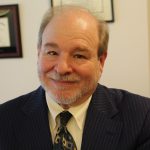Anger, Anxiety, and Pain: A Description of an Analytic Session
Rebecca Twersky-Kengmana, MD
Read More
 Eric M. Plakun, MD
Associate medical director, director of admissions at the Austen Riggs Center in Stockbridge, MA
Dr. Plakun has disclosed that he has no relevant financial or other interests in any commercial companies pertaining to this educational activity.
Eric M. Plakun, MD
Associate medical director, director of admissions at the Austen Riggs Center in Stockbridge, MA
Dr. Plakun has disclosed that he has no relevant financial or other interests in any commercial companies pertaining to this educational activity.
Please see our Terms and Conditions, Privacy Policy, Subscription Agreement, Use of Cookies, and Hardware/Software Requirements to view our website.
© 2025 Carlat Publishing, LLC and Affiliates, All Rights Reserved.